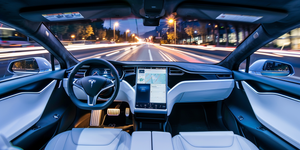Edge computing is boosting the performance and safety of self-driving cars. facilitating on-device data processing, drastically reducing latency, enhancing safety, and ensuring efficient vehicle operation. By processing data from sensors and cameras directly on the vehicle, edge computing enables real-time decisions crucial for navigating complex driving scenarios.
🚗
Contact us today to explore how we can fuel your self-driving car projects with our edge technology solutions.
How Edge Computing Enhances Self-Driving Car Functions
- Real-Time Data Analysis: Processes vast data locally, critical for navigation and safety.
- Safety Enhancements: Boosts vehicle response to obstacles and conditions, enhancing passenger safety.
- Bandwidth Efficiency: Local data processing reduces bandwidth use, ensuring efficient vehicle communication.
- Dependable Performance: Maintains operation in areas with limited connectivity, crucial for autonomy.
- Data Security: Minimizes external threat exposure by processing data within the vehicle.
- Future-Proofing: Integral to autonomous vehicle advancement, supporting smarter, faster decision-making.
Accelerate Autonomous Vehicle Innovation
Embrace our cutting-edge edge computing and GPU solutions to advance your self-driving vehicles. Our technology ensures swift, intelligent, and secure operations, setting new standards in autonomous mobility. Equip your projects with our solutions to lead the future of transportation.

